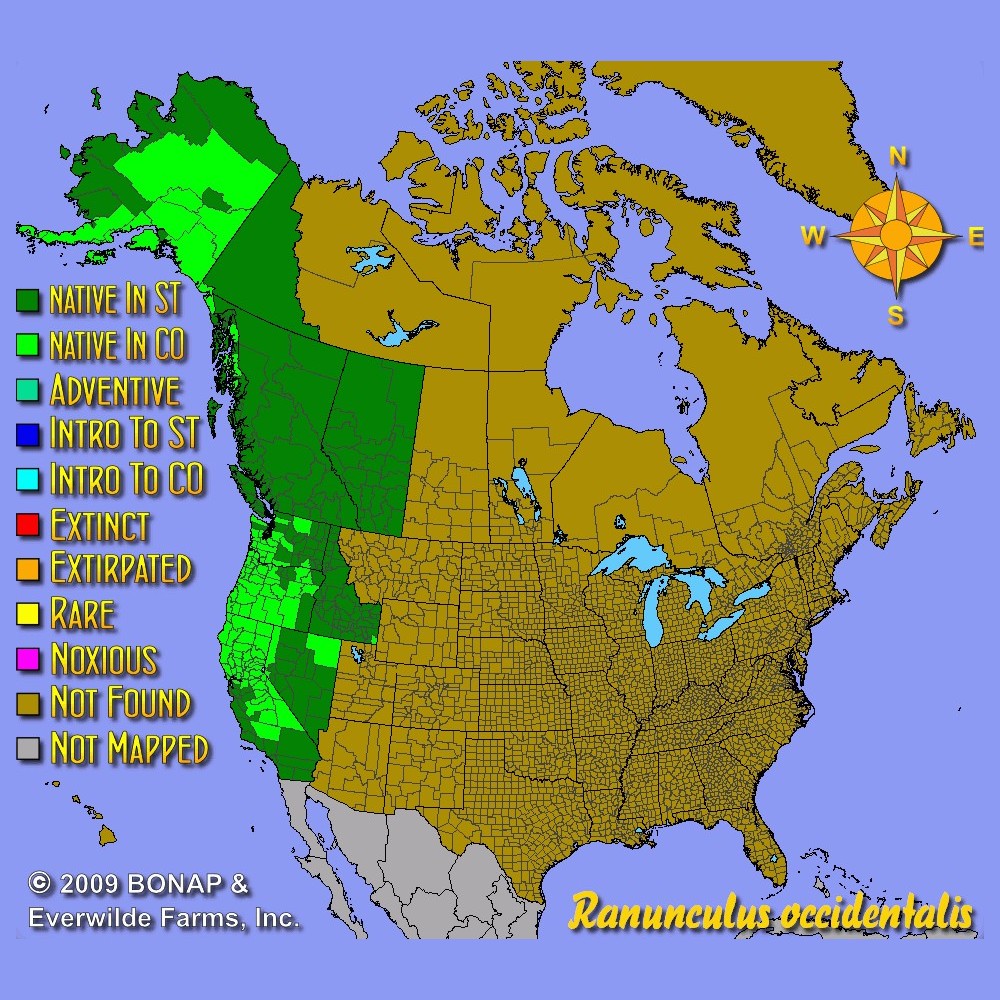Western Buttercup Seeds
Ranunculus occidentalis
- HOW TO GROW
- FAST FACTS
HOW TO GROW
Sowing: Direct sow in late fall, planting just below the surface of the soil. For spring planting, mix the seeds with moist sand and store in the refrigerator for 60 days before planting. Keep the soil lightly moist until germination, which may be slow. The seeds can also be started indoors 8-10 weeks before planting in spring. Keep seedlings lightly moist, and transplant them as soon as they have developed several leaves.
Growing: Water seedlings regularly until they become established, and control weeds. Mature plants tolerate occasional drought, though they prefer moist or wetland soil and will benefit from watering in dry weather. This plant also grows well in rocky, sandy, or clay soil. It can spread by reseeding itself, though it does not become invasive. This plant also makes an excellent choice for rock gardens, and attracts bees.
Harvesting: These blossoms do not perform well as cut flowers, and are best enjoyed outdoors.
Seed Saving: After the flowers fade, the seeds will develop in a sharp cluster. Gather the seeds as soon as they begin to turn brown and loosen from the stem. Keep the seeds in a cool, dry place. Keep in mind that the viability of these seeds decreases with age, and fresh seeds have the best germination rates.
FAST FACTS
Latin Name: Ranunculus occidentalis
Species Origin: US Native Wildflower
Type: Native Wildflowers
Life Cycle: Perennial
USDA Zones: 1, 2, 3, 4, 5, 6, 7, 8, 9, 10
US Regions: California, Mountain, Arid/Desert
Seeds per Ounce: 16,375
Stratification: Warm/Wet for 4 Weeks, then Cold/Wet for 4 Weeks
Germination Ease: Stratify 8 Weeks
Sunlight: Full Sun, Part Sun
Height: 24 Inches
Color: Yellow
Bloom Season: Blooms Early Spring, Blooms Late Spring
DESCRIPTION

HOW TO GROW
Sowing: Direct sow in late fall, planting just below the surface of the soil. For spring planting, mix the seeds with moist sand and store in the refrigerator for 60 days before planting. Keep the soil lightly moist until germination, which may be slow. The seeds can also be started indoors 8-10 weeks before planting in spring. Keep seedlings lightly moist, and transplant them as soon as they have developed several leaves.
Growing: Water seedlings regularly until they become established, and control weeds. Mature plants tolerate occasional drought, though they prefer moist or wetland soil and will benefit from watering in dry weather. This plant also grows well in rocky, sandy, or clay soil. It can spread by reseeding itself, though it does not become invasive. This plant also makes an excellent choice for rock gardens, and attracts bees.
Harvesting: These blossoms do not perform well as cut flowers, and are best enjoyed outdoors.
Seed Saving: After the flowers fade, the seeds will develop in a sharp cluster. Gather the seeds as soon as they begin to turn brown and loosen from the stem. Keep the seeds in a cool, dry place. Keep in mind that the viability of these seeds decreases with age, and fresh seeds have the best germination rates.
FAST FACTS
Latin Name: Ranunculus occidentalis
Species Origin: US Native Wildflower
Type: Native Wildflowers
Life Cycle: Perennial
USDA Zones: 1, 2, 3, 4, 5, 6, 7, 8, 9, 10
US Regions: California, Mountain, Arid/Desert
Seeds per Ounce: 16,375
Stratification: Warm/Wet for 4 Weeks, then Cold/Wet for 4 Weeks
Germination Ease: Stratify 8 Weeks
Sunlight: Full Sun, Part Sun
Height: 24 Inches
Color: Yellow
Bloom Season: Blooms Early Spring, Blooms Late Spring



